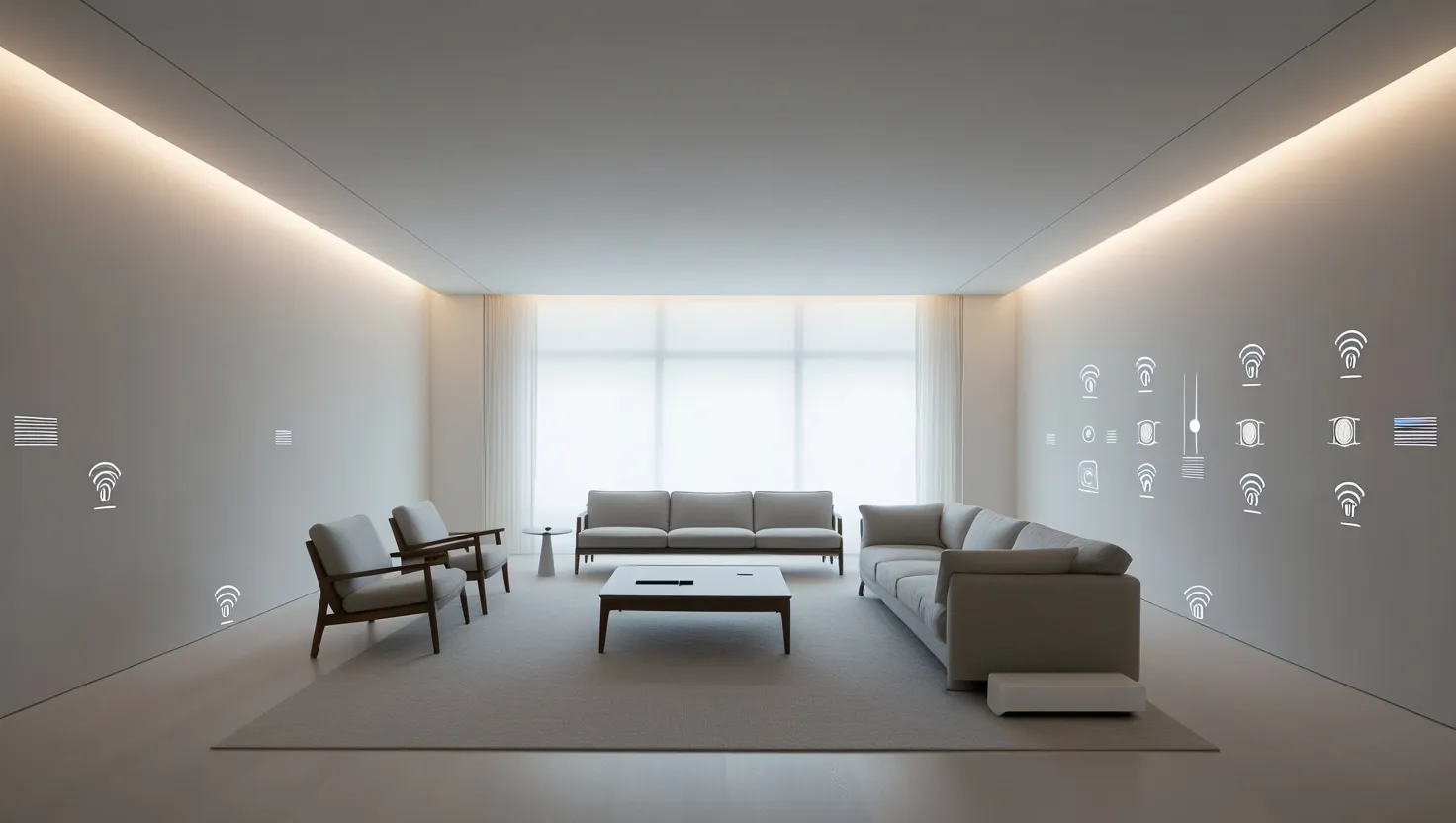Imagine a home that knows you better than you know yourself. A living space that anticipates your needs, adjusts to your moods, and enhances your daily life without you lifting a finger. This isn’t science fiction - it’s the reality of ambient intelligence in modern smart homes.
Gone are the days of fumbling for light switches in the dark or constantly fiddling with your thermostat. Today’s ambient intelligence strategies create an effortlessly responsive environment that works for you. Let’s explore how these innovative approaches are transforming our living spaces.
Picture this: You wake up in the middle of the night and shuffle towards the bathroom. As you step into the hallway, soft lighting gently illuminates your path, just bright enough to guide you without jolting you awake. This is motion-activated pathways in action. By integrating connected lighting with occupancy sensors, your home creates a safe, comfortable environment tailored to the time of day and your specific needs.
But the magic doesn’t stop there. As you move through your home, the climate adjusts to your presence. Presence-based climate optimization ensures that energy isn’t wasted heating or cooling empty rooms. Instead, the system focuses on creating the perfect atmosphere wherever you are. Isn’t it time your home worked smarter, not harder?
“The best design is the one you don’t notice.” - Milton Glaser
Have you ever wished your favorite playlist could follow you from room to room? With context-aware music systems, it can. Smart speakers work in harmony to create a seamless audio experience throughout your home. The system learns your preferences over time, understanding that you might enjoy upbeat tunes while cooking but prefer calming melodies as you wind down for bed.
But what about those daily routines we all have? Predictive appliance activation takes the guesswork out of your morning routine. Imagine your coffee brewing just as you wake up, your shower warming to the perfect temperature as you enter the bathroom, and your lights adjusting to complement the natural light outside. It’s like having a personal assistant who knows exactly what you need, when you need it.
Health and wellness are crucial aspects of our lives, but who has time to constantly monitor their vital signs? Passive health monitoring integrates seamlessly into your home environment, tracking important health indicators without the need for wearable devices. Your furniture becomes a silent guardian, alerting you to potential health concerns before they become serious issues.
“The future is already here – it’s just not evenly distributed.” - William Gibson
How often do you forget to arm your security system? With adaptive security, that’s a worry of the past. By analyzing your behavior patterns, the system can distinguish between normal activities and potential threats. It adjusts security measures automatically, providing peace of mind without constant manual input.
As we embrace these ambient intelligence strategies, our homes become more than just living spaces - they become partners in our daily lives. They learn, adapt, and respond to our needs in ways that seemed impossible just a few years ago. But with great power comes great responsibility. How do we balance the convenience of ambient intelligence with privacy concerns?
It’s crucial to consider the ethical implications of these technologies. While the benefits are clear, we must be mindful of data collection and usage. Transparency from manufacturers and control for homeowners should be at the forefront of ambient intelligence development.
What if your home could detect your stress levels and respond accordingly? Imagine coming home after a tough day to find your living room bathed in soothing colors, your favorite relaxation playlist softly playing, and the aroma of lavender wafting through the air. This level of emotional intelligence in our living spaces could revolutionize how we manage stress and mental health.
But let’s not forget the environmental impact. Ambient intelligence has the potential to significantly reduce our energy consumption. By optimizing resource use based on real-time needs, smart homes can play a crucial role in combating climate change. How can we ensure that these technologies are developed with sustainability in mind?
“The greatest danger in times of turbulence is not the turbulence; it is to act with yesterday’s logic.” - Peter Drucker
As we look to the future, the possibilities seem endless. Could ambient intelligence extend beyond our homes to create smarter, more responsive cities? Imagine streetlights that adjust their brightness based on pedestrian traffic, or public spaces that adapt to weather conditions to maximize comfort and safety.
The integration of artificial intelligence and machine learning will undoubtedly push the boundaries of what’s possible in ambient intelligence. But as these systems become more advanced, how do we ensure they remain tools that enhance our lives rather than control them?
One exciting prospect is the potential for ambient intelligence to support aging in place. For elderly individuals or those with disabilities, a home that can anticipate needs and provide assistance could be life-changing. From medication reminders to fall detection systems, these technologies could offer independence and peace of mind for both individuals and their families.
But what about the digital divide? As homes become smarter, there’s a risk of creating a new form of inequality. How can we ensure that the benefits of ambient intelligence are accessible to all, regardless of economic status?
“Technology is nothing. What’s important is that you have a faith in people, that they’re basically good and smart, and if you give them tools, they’ll do wonderful things with them.” - Steve Jobs
The road ahead for ambient intelligence is exciting and full of potential. As these technologies continue to evolve, they promise to create living spaces that are not just smart, but truly intelligent - environments that understand us, support us, and enhance our quality of life in ways we’re only beginning to imagine.
What role will you play in this ambient intelligence revolution? Will you be an early adopter, shaping the future of smart homes? Or will you take a more cautious approach, waiting to see how these technologies develop?
Regardless of your stance, one thing is clear: ambient intelligence is set to transform our relationship with our living spaces. As we move forward, let’s embrace the possibilities while remaining mindful of the challenges. After all, the smartest home is one that not only responds to our needs but also respects our values and enhances our humanity.






